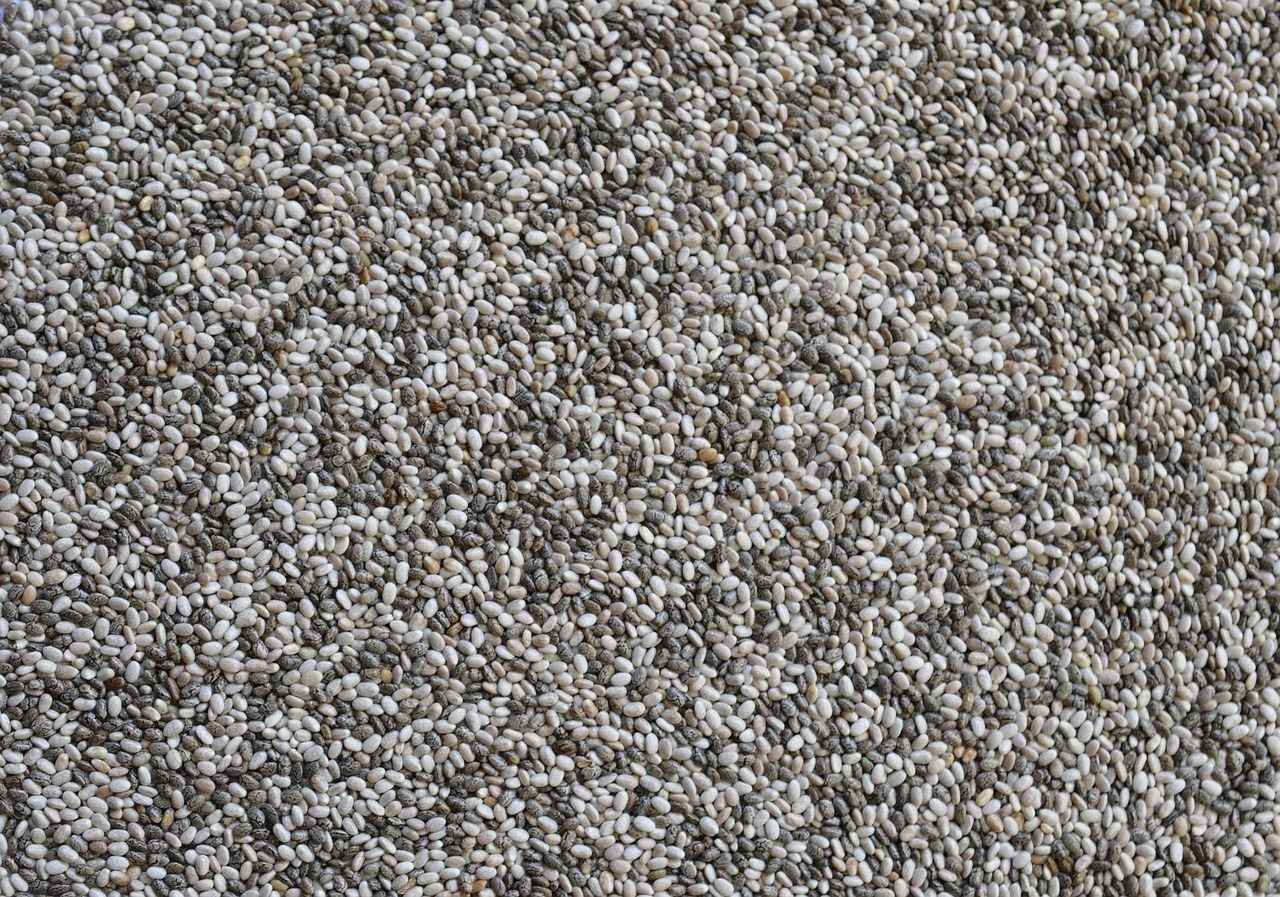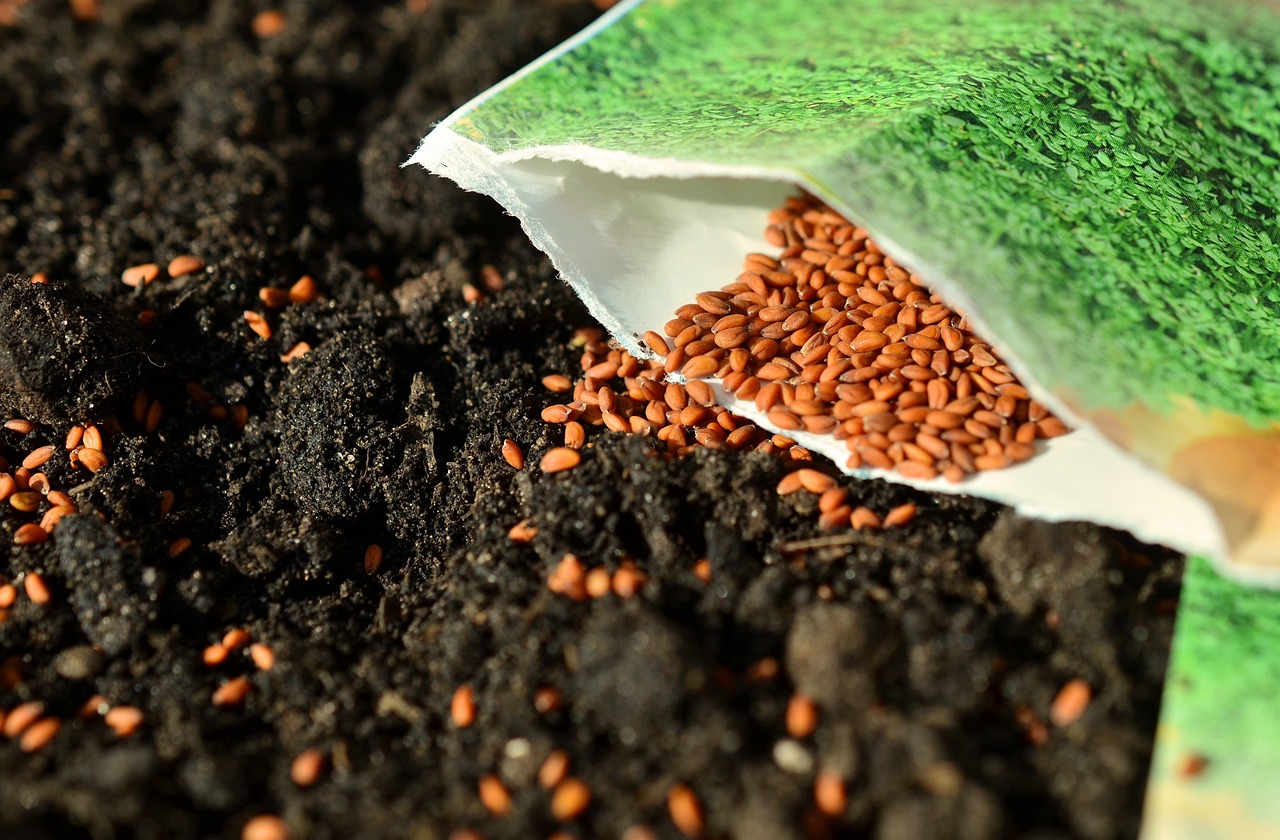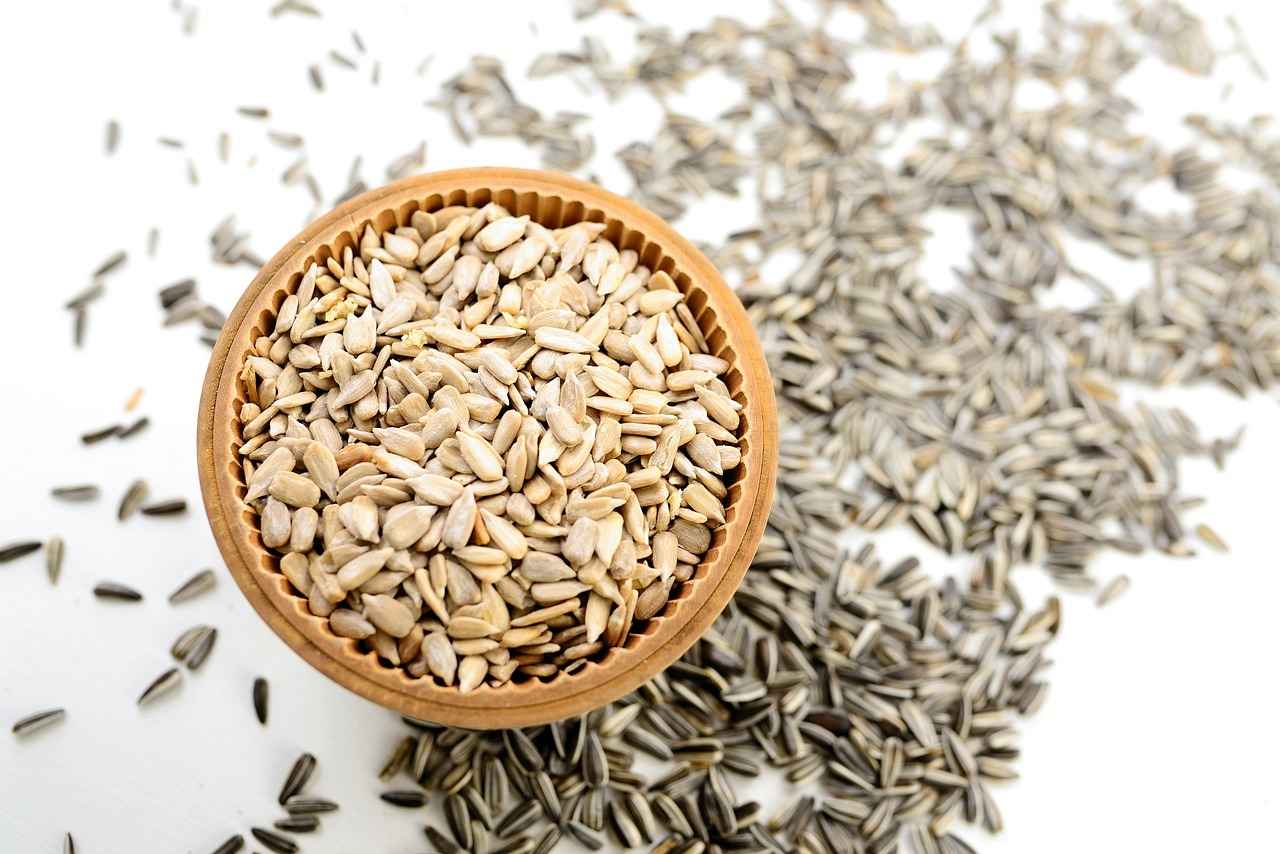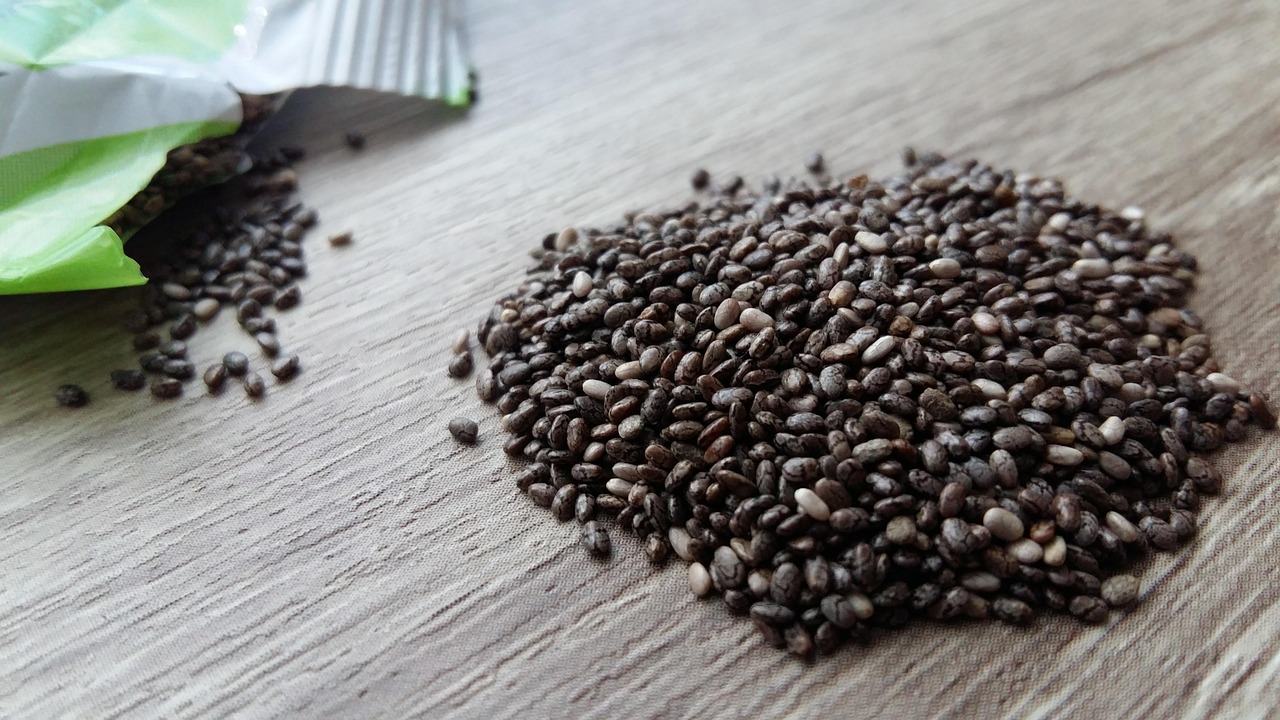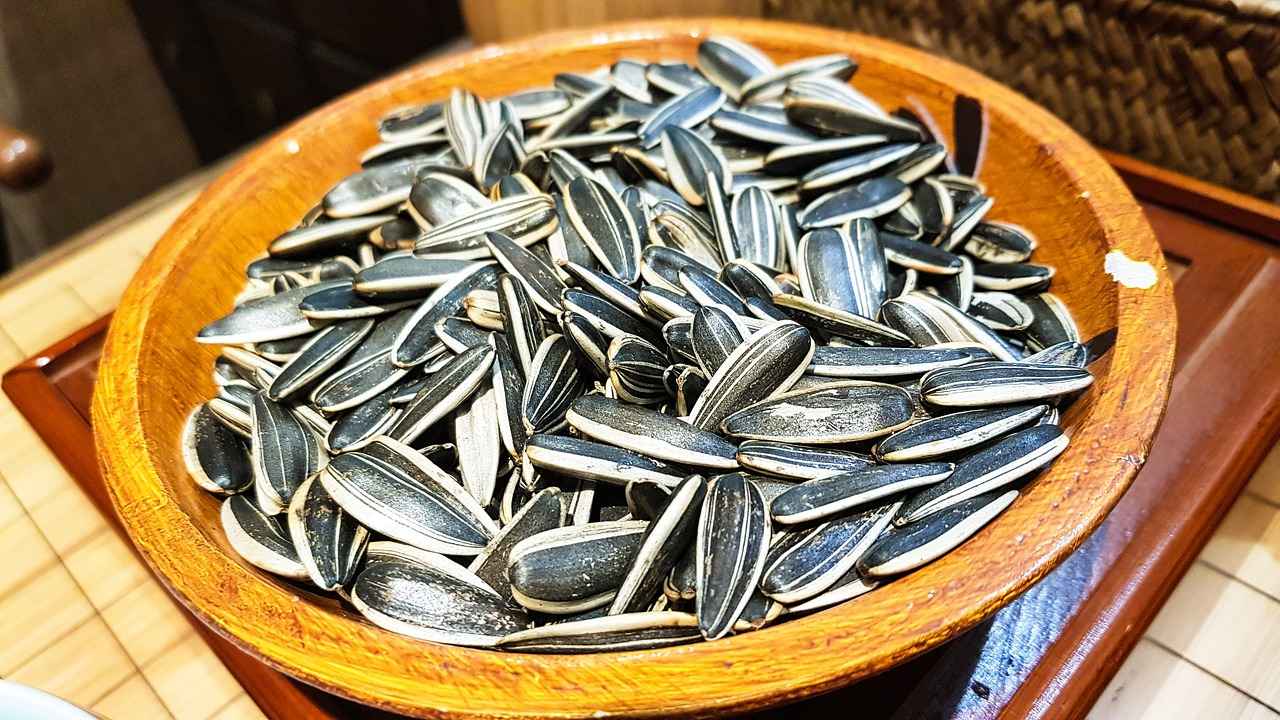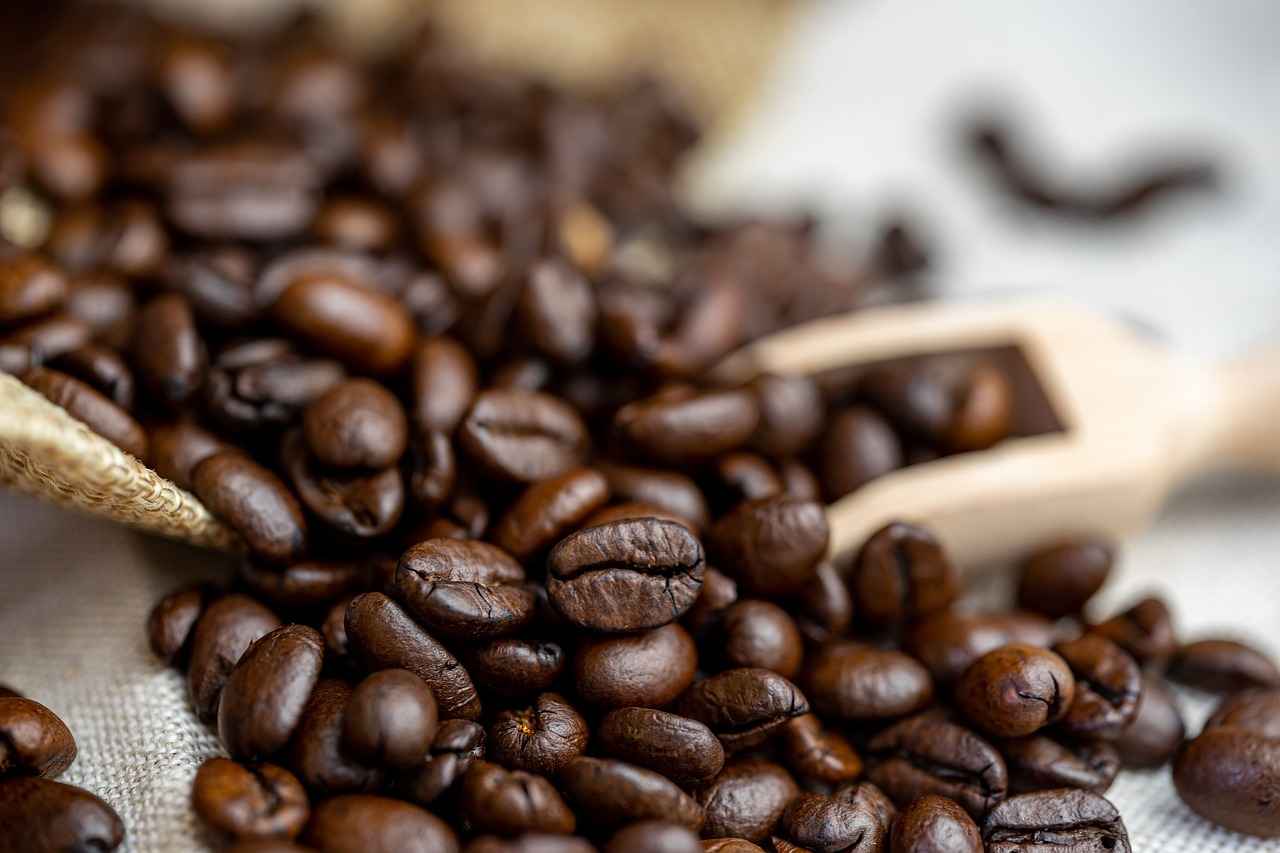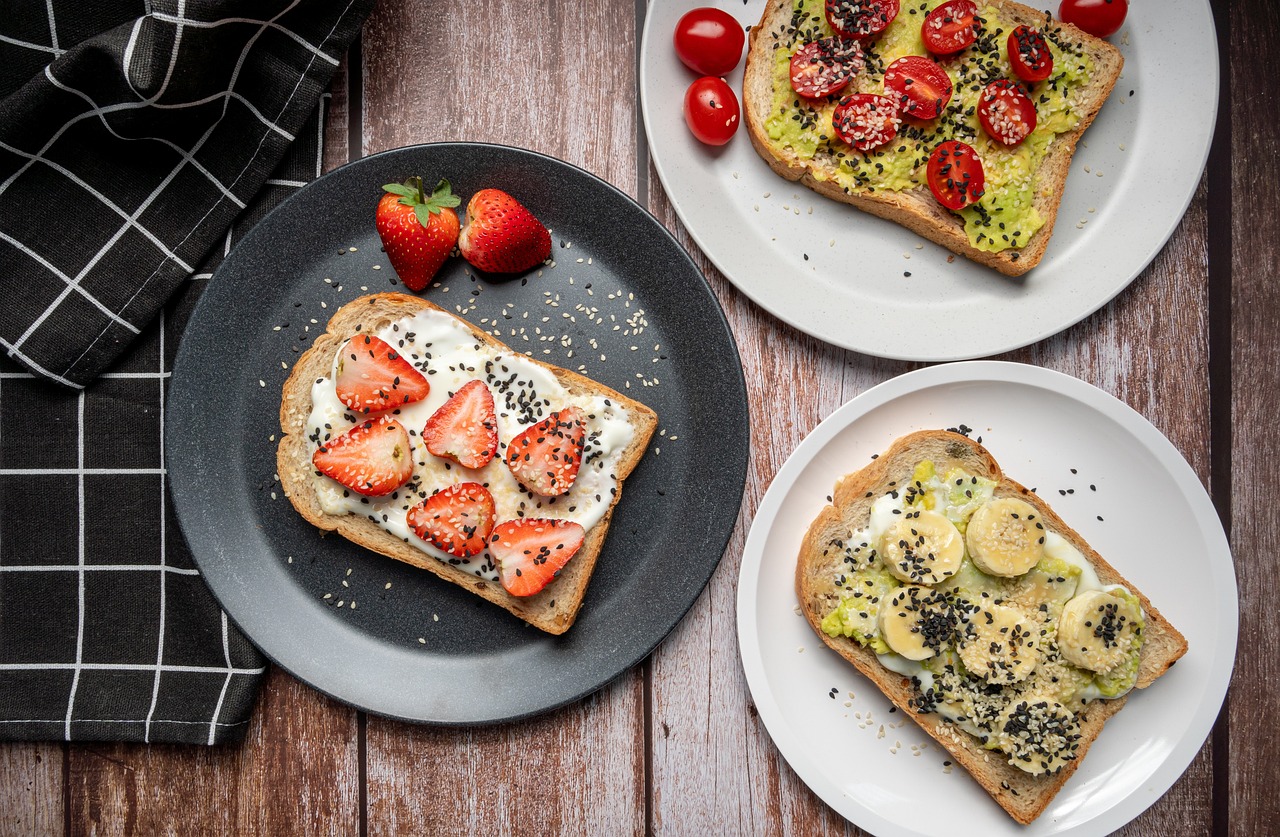This article explores the potential side effects of chia seeds, how to consume them safely, and tips for maximizing their health benefits while minimizing risks. Chia seeds have gained popularity as a superfood, but understanding their effects on the body is crucial for safe consumption.
What Are Chia Seeds and Their Benefits?
Chia seeds are small, black, or white seeds derived from the Salvia hispanica plant. They are rich in fiber, omega-3 fatty acids, and various vitamins and minerals. Their high nutrient density contributes to numerous health benefits, including improved heart health, enhanced digestion, and better blood sugar control.
Can Chia Seeds Cause Digestive Issues?
While chia seeds are beneficial, consuming them in excess can lead to digestive discomfort. Their high fiber content can cause bloating, gas, and even constipation if introduced too quickly into your diet. It’s essential to understand how to incorporate them gradually.
What Symptoms Indicate Digestive Distress?
- Bloating
- Gas
- Constipation
Recognizing these symptoms can help you adjust your chia seed intake effectively.
How to Minimize Digestive Discomfort?
To mitigate digestive issues, start with a small serving size, such as 1 teaspoon, and gradually increase to the recommended 1-2 tablespoons per day. Staying hydrated is also critical, as drinking plenty of water can help your digestive system process the fiber more efficiently.
Should You Soak Chia Seeds Before Eating?
Soaking chia seeds in water or other liquids before consumption can significantly reduce their potential to cause digestive issues. This process allows them to expand and become gel-like, making them easier to digest.
Are There Allergic Reactions to Chia Seeds?
Though rare, some individuals may experience allergic reactions to chia seeds. Symptoms can include rashes, itching, or gastrointestinal distress. If you suspect an allergy, consult a healthcare professional immediately.
How Do Chia Seeds Interact with Medications?
Chia seeds can interact with certain medications, particularly those affecting blood sugar and blood clotting. If you are taking anticoagulants or diabetes medications, it is crucial to consult your doctor before adding chia seeds to your diet.
What Medications Should You Be Cautious With?
Be particularly cautious if you’re on medications like warfarin or insulin, as chia seeds can influence blood sugar levels and clotting factors.
Are There Any Contraindications for Pregnant Women?
Pregnant women should exercise caution with chia seeds due to their high fiber content, which may lead to digestive discomfort. It is advisable to consult a healthcare provider before including them in your diet.
How to Incorporate Chia Seeds Safely into Your Diet?
Incorporating chia seeds into your diet can be beneficial if done correctly. Here are some practical tips:
- Start with small amounts and gradually increase your intake.
- Consider soaking them before consumption.
- Mix them into smoothies, yogurt, or oatmeal for added texture and nutrition.
What Are the Recommended Serving Sizes?
A typical serving size of chia seeds is 1-2 tablespoons. Sticking to this guideline can help prevent adverse effects and ensure you reap the nutritional benefits.
Which Recipes Can Help You Enjoy Chia Seeds?
Chia seeds can be seamlessly added to various recipes, including smoothies, oatmeal, and baked goods. Experimenting with different recipes can make their consumption enjoyable while minimizing risks.
What Are the Nutritional Considerations of Chia Seeds?
Understanding the nutritional profile of chia seeds is essential for making informed dietary choices. They offer numerous health benefits when consumed appropriately, including improved heart health and digestive function.
How Do Chia Seeds Compare to Other Seeds?
Chia seeds have a unique nutrient profile compared to flaxseeds and hemp seeds. Knowing these differences can help you choose the right seeds for your dietary needs.
What Are the Long-Term Effects of Regular Consumption?
Regular consumption of chia seeds can lead to long-term health benefits, including improved heart health and digestive function, provided they are consumed in moderation.

What Are Chia Seeds and Their Benefits?
Chia seeds, derived from the Salvia hispanica plant, are often celebrated for their impressive nutritional profile. These tiny seeds are not only rich in essential nutrients but also versatile in their culinary applications. They have gained immense popularity in the health food industry, and understanding their benefits can help consumers make informed dietary choices.
Chia seeds are a powerhouse of nutrients, offering a wide array of health benefits:
- High in Fiber: Chia seeds contain approximately 11 grams of fiber per ounce, which aids in digestion and promotes a feeling of fullness.
- Rich in Omega-3 Fatty Acids: They are one of the best plant-based sources of omega-3 fatty acids, which are vital for heart health and reducing inflammation.
- Antioxidants: Chia seeds are loaded with antioxidants that help combat oxidative stress and protect the body from free radicals.
- Minerals: They are a good source of essential minerals like calcium, magnesium, and phosphorus, which are crucial for bone health.
The high fiber content in chia seeds plays a significant role in supporting digestive health. Fiber is known to enhance bowel regularity, prevent constipation, and promote a healthy gut microbiome. When chia seeds are mixed with liquid, they can absorb up to 10-12 times their weight, forming a gel-like substance that can aid in digestion.
Due to their ability to absorb water and expand in the stomach, chia seeds can help you feel full longer, potentially aiding in weight management. Incorporating them into meals can help control appetite and reduce overall calorie intake. However, it’s essential to consume them in moderation to avoid excessive calorie intake.
Chia seeds are incredibly versatile and can be incorporated into various dishes:
- Smoothies: Blend them into smoothies for added nutrition and texture.
- Oatmeal: Stir them into oatmeal or yogurt for a nutrient boost.
- Baking: Use chia seeds in baked goods like muffins and bread as a healthy ingredient.
- Chia Pudding: Mix chia seeds with milk or a milk alternative and let them soak overnight to create a delicious pudding.
The consumption of chia seeds has been linked to several health benefits:
- Heart Health: The omega-3 fatty acids in chia seeds can help lower cholesterol levels and reduce the risk of heart disease.
- Bone Health: The calcium and phosphorus content supports strong bones and teeth.
- Blood Sugar Control: Chia seeds may help stabilize blood sugar levels, making them a great option for individuals with diabetes.
- Anti-Inflammatory Properties: The antioxidants present in chia seeds combat inflammation, which is linked to various chronic diseases.
To enjoy the benefits of chia seeds, consider the following tips:
- Start Small: If you’re new to chia seeds, begin with a small amount (about 1 teaspoon) and gradually increase your intake.
- Stay Hydrated: Ensure you drink plenty of water, especially when consuming high-fiber foods like chia seeds, to prevent digestive discomfort.
- Experiment with Recipes: Find creative ways to include chia seeds in your meals, from smoothies to salads.
In summary, chia seeds are a highly nutritious addition to any diet, offering numerous health benefits when consumed appropriately. Their versatility in cooking allows for easy incorporation into various meals, making them a popular choice for health-conscious individuals.
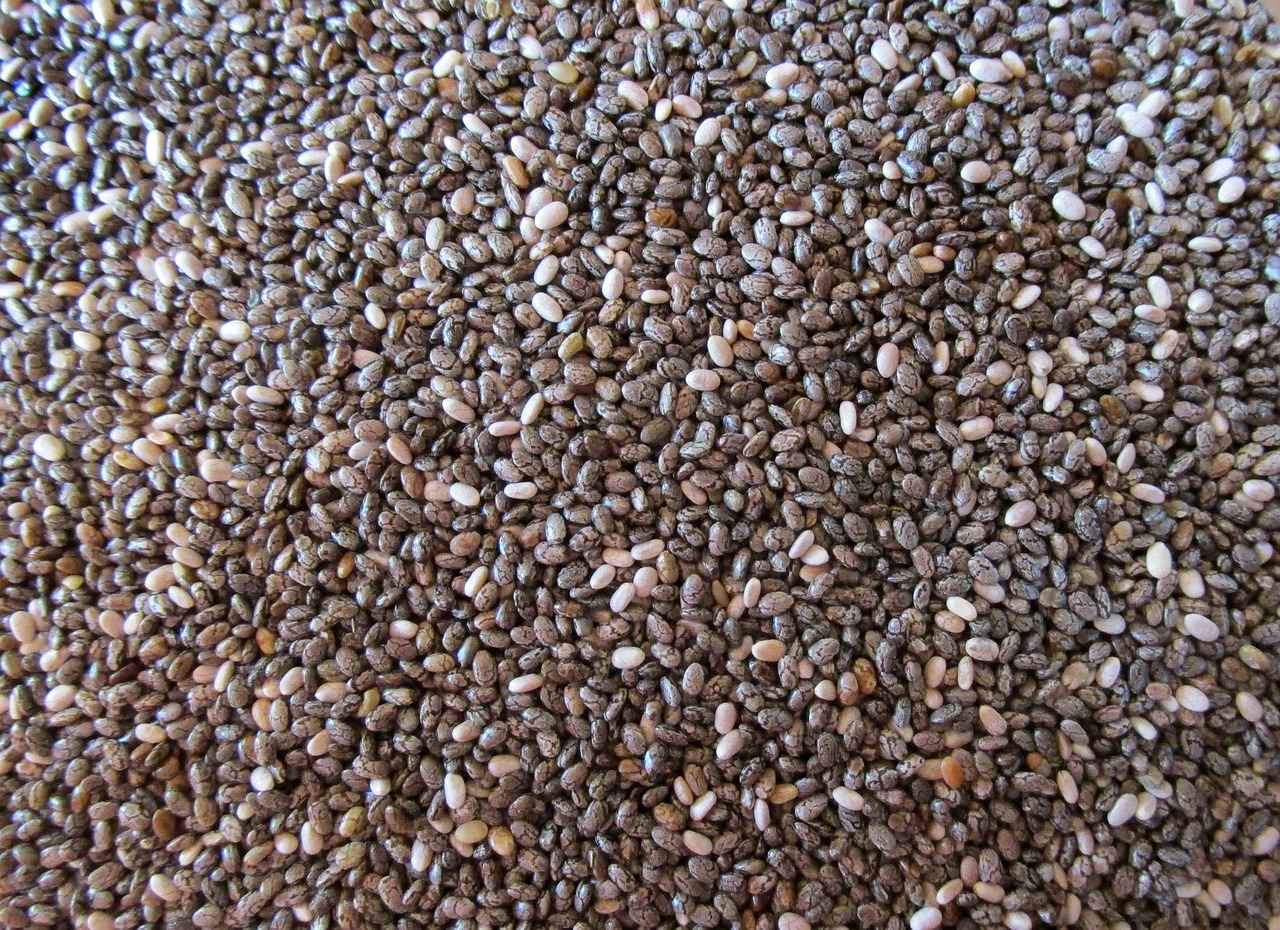
Can Chia Seeds Cause Digestive Issues?
Chia seeds have gained immense popularity in recent years due to their nutritional benefits, including high levels of fiber, omega-3 fatty acids, and antioxidants. However, as with any food, understanding how to consume them safely is crucial. One of the primary concerns surrounding chia seeds is their potential to cause digestive issues, especially when consumed in large quantities.
While chia seeds are rich in fiber, excessive consumption can lead to various digestive problems. The high fiber content, while beneficial for many, can overwhelm the digestive system if introduced too quickly. It’s essential to know how to incorporate them into your diet gradually to avoid discomfort.
- Bloating: A common symptom that occurs when the stomach feels full and swollen.
- Gas: Excessive fiber can lead to increased gas production in the intestines.
- Constipation: Although fiber typically aids digestion, too much without adequate hydration can lead to constipation.
Recognizing these symptoms can help you adjust your chia seed intake accordingly. If you experience any of these issues, it may be a sign to reduce your consumption or modify how you consume them.
To reduce the risk of digestive discomfort when consuming chia seeds, consider the following tips:
- Start Small: Begin with a small serving size, such as one teaspoon, and gradually increase it to one or two tablespoons as your body adjusts.
- Stay Hydrated: Drink plenty of water throughout the day, especially when consuming high-fiber foods like chia seeds. This will help your digestive system process the fiber more effectively.
- Soak Chia Seeds: Soaking chia seeds in water or other liquids before consumption can help reduce their potential to cause digestive issues. This process allows them to expand and become gel-like, making them easier to digest.
Though rare, some individuals may experience allergic reactions to chia seeds. Symptoms may include itching, rashes, or gastrointestinal distress. If you suspect an allergy, it’s important to consult a healthcare professional for guidance.
Chia seeds can interact with certain medications, particularly blood thinners and diabetes medications. It’s crucial to understand these interactions to ensure safe consumption. If you are on anticoagulants or diabetes medications, consult your doctor before adding chia seeds to your diet, as they can affect blood sugar levels and clotting factors.
Pregnant women should exercise caution with chia seeds due to their high fiber content, which can lead to digestive issues. Consulting a healthcare provider is recommended to ensure safe consumption during pregnancy.
Incorporating chia seeds into your diet can be beneficial if done correctly. Here are some practical tips:
- Recommended Serving Sizes: Stick to a typical serving size of 1-2 tablespoons to prevent adverse effects.
- Creative Recipes: Chia seeds can be added to smoothies, oatmeal, and baked goods. Exploring various recipes can make their consumption enjoyable while minimizing risks.
By understanding the potential digestive issues associated with chia seeds and following these guidelines, you can enjoy their numerous health benefits while minimizing risks. Remember that moderation and gradual introduction are key to a healthy diet.
What Symptoms Indicate Digestive Distress?
Chia seeds have gained immense popularity due to their numerous health benefits, but it’s important to recognize that they can also lead to digestive discomfort for some individuals. Common symptoms of digestive distress associated with chia seeds include bloating, gas, and constipation. Understanding these signs is crucial for anyone looking to incorporate chia seeds into their diet effectively.
When consumed in moderation, chia seeds can be a fantastic source of fiber, omega-3 fatty acids, and antioxidants. However, excessive intake can overwhelm your digestive system, especially if you are not accustomed to a high-fiber diet. Here are some symptoms to watch for:
- Bloating: This is often the first sign that your body is struggling to process the increased fiber from chia seeds. Bloating can occur when gas is trapped in the digestive tract, leading to discomfort.
- Gas: As your body breaks down the fiber in chia seeds, it can produce gas, leading to feelings of fullness or pressure in your abdomen.
- Constipation: While fiber is generally known to aid digestion, too much fiber without adequate hydration can lead to constipation, making it difficult for your body to move waste through the intestines.
Recognizing these symptoms early can help you adjust your intake of chia seeds. If you experience any of these signs, consider reducing the amount you consume or increasing your water intake. Staying hydrated is particularly important when adding high-fiber foods to your diet, as fiber absorbs water and helps regulate bowel movements.
Additionally, it may be beneficial to introduce chia seeds gradually into your meals. Start with a small amount, such as one teaspoon, and observe how your body reacts before increasing the serving size. This gradual approach allows your digestive system to adapt to the additional fiber without causing undue stress.
Another effective strategy is to soak chia seeds before consumption. Soaking allows the seeds to expand and absorb liquid, making them easier to digest. You can add soaked chia seeds to smoothies, yogurt, or oatmeal, which can help mitigate potential digestive issues.
It’s also vital to consider your overall diet. If you are consuming a variety of other high-fiber foods, such as fruits, vegetables, and whole grains, you may need to limit your chia seed intake to avoid overwhelming your digestive system.
In summary, while chia seeds offer numerous health benefits, it’s essential to be mindful of how they affect your digestive health. By recognizing the symptoms of digestive distress and adjusting your intake accordingly, you can enjoy the benefits of chia seeds without experiencing discomfort.
How to Minimize Digestive Discomfort?
Chia seeds have gained immense popularity due to their numerous health benefits, but they can also lead to digestive discomfort if not consumed properly. To ensure you enjoy the advantages of these tiny powerhouses while minimizing any unpleasant side effects, it is essential to understand how to incorporate them into your diet effectively.
One of the most effective ways to minimize digestive discomfort when consuming chia seeds is to begin with small servings. A recommended starting point is 1 teaspoon of chia seeds, gradually increasing to the standard serving size of 1-2 tablespoons over time. This gradual approach allows your digestive system to adapt to the increased fiber intake, reducing the risk of bloating and gas.
Another critical aspect of consuming high-fiber foods like chia seeds is staying hydrated. Chia seeds can absorb up to 12 times their weight in water, which means they expand in your stomach. If you do not drink enough fluids, this can lead to discomfort. Aim to drink at least 8-10 cups of water daily, especially when increasing your chia seed intake. This will help facilitate digestion and prevent constipation.
Soaking chia seeds before consumption can significantly enhance their digestibility. By soaking them in water or any liquid for about 30 minutes, you allow them to expand and form a gel-like consistency. This process not only makes them easier to digest but also enhances their nutritional absorption. You can add soaked chia seeds to smoothies, yogurt, or oatmeal for a nutritious boost without the risk of digestive issues.
As you introduce chia seeds into your diet, it’s crucial to pay attention to your body’s signals. Symptoms such as bloating, gas, or constipation may indicate that you are consuming too much too quickly. If you experience any discomfort, consider reducing your serving size or the frequency of consumption until your body adjusts.
Incorporating chia seeds into meals that are rich in other nutrients can also help mitigate digestive discomfort. For instance, adding chia seeds to smoothies with fruits and vegetables can provide a balance of fiber, vitamins, and minerals. This combination not only enhances the overall nutritional profile of your meal but also aids in digestion.
If you have pre-existing digestive issues or concerns about incorporating chia seeds into your diet, it is wise to consult a healthcare professional. They can provide personalized advice based on your health history and dietary needs, ensuring that you enjoy the benefits of chia seeds without adverse effects.
In summary, minimizing digestive discomfort when consuming chia seeds is achievable through mindful practices. By starting with small servings, staying hydrated, soaking the seeds, monitoring your body’s response, and mixing them with other foods, you can enjoy the myriad health benefits of chia seeds while keeping digestive issues at bay.
Should You Soak Chia Seeds Before Eating?
Chia seeds have gained immense popularity due to their numerous health benefits, but many people are unaware of how to prepare them properly. One common question that arises is, “Should you soak chia seeds before eating?” The answer lies in understanding the properties of these tiny seeds and how they interact with our digestive system.
Soaking chia seeds is a simple yet effective method to enhance their digestibility. When chia seeds are exposed to liquid, they absorb it and expand significantly, forming a gel-like consistency. This process not only makes them easier to digest but also helps to minimize potential digestive issues that some individuals may experience.
Chia seeds are rich in fiber, which is beneficial for digestive health. However, consuming them dry can lead to bloating, gas, and even constipation for some people. By soaking chia seeds, you allow them to absorb moisture, which helps to soften their texture and makes them easier for the body to process. This is particularly important for those who may not be used to high-fiber foods.
- Ratio: A common soaking ratio is 1 part chia seeds to 4 parts liquid. This ensures that the seeds have enough moisture to expand properly.
- Time: Soak the seeds for at least 30 minutes, but for optimal results, letting them sit overnight in the refrigerator is recommended.
- Liquid Options: You can use water, almond milk, coconut milk, or any other liquid of your choice to soak the seeds.
In addition to improving digestibility, soaked chia seeds offer several other benefits:
- Enhanced Nutrient Absorption: Soaking can help to release nutrients, making them more bioavailable.
- Hydration: The gel-like consistency of soaked chia seeds can help keep you hydrated, especially when added to smoothies or juices.
- Versatility: Soaked chia seeds can be easily incorporated into various recipes, such as puddings, smoothies, and baked goods.
While soaking chia seeds is generally beneficial, there are a few considerations to keep in mind:
- Texture Preference: Some people may prefer the crunchiness of dry chia seeds and might not enjoy the gel-like texture that results from soaking.
- Storage: Soaked chia seeds should be stored in the refrigerator and consumed within a few days to prevent spoilage.
In summary, soaking chia seeds before consumption is highly recommended for those looking to enhance their digestive health and overall nutrient absorption. The simple process of soaking can make a significant difference in how your body handles these nutrient-dense seeds. By incorporating soaked chia seeds into your diet, you can enjoy their many health benefits while minimizing the risk of digestive discomfort.
Are There Allergic Reactions to Chia Seeds?
Chia seeds, known for their nutritional benefits, are becoming increasingly popular in health-conscious diets. However, as with many foods, there can be potential risks associated with their consumption. One of the lesser-known concerns is the possibility of allergic reactions. Understanding these reactions is crucial for anyone considering adding chia seeds to their diet.
Though rare, some individuals may experience allergic reactions to chia seeds. These reactions can range from mild to severe, and it is essential to be aware of the symptoms. Common indicators of an allergic reaction include:
- Skin Reactions: Hives, rashes, or eczema may occur.
- Respiratory Issues: Symptoms such as difficulty breathing, wheezing, or nasal congestion can arise.
- Gastrointestinal Distress: Nausea, vomiting, or diarrhea might be experienced.
The exact cause of chia seed allergies remains unclear. However, it is believed that certain proteins in the seeds may trigger an immune response in sensitive individuals. If you have a history of allergies to other seeds, such as flaxseeds or sesame seeds, you may be at a higher risk for a chia seed allergy.
If you suspect that you may be allergic to chia seeds, it is crucial to monitor your body’s response after consuming them. Keeping a food diary can help identify patterns and symptoms. If you experience any adverse reactions, it is advisable to consult a healthcare professional for proper evaluation and testing.
If you notice symptoms of an allergic reaction after consuming chia seeds, it is important to take the following steps:
- Stop Consumption: Immediately discontinue eating chia seeds.
- Seek Medical Attention: If symptoms are severe, such as difficulty breathing or swelling of the face, seek emergency medical help.
- Consult a Healthcare Provider: Even if symptoms are mild, discussing your experience with a healthcare provider can help determine the best course of action.
If you do not have an allergy to chia seeds, you can enjoy their numerous health benefits, such as high fiber content and omega-3 fatty acids. To minimize any potential risks:
- Start Slowly: Introduce chia seeds gradually into your diet.
- Monitor Your Body’s Response: Pay attention to how your body reacts, especially if you have a history of food allergies.
- Consult a Professional: If you have concerns or a history of allergies, consult a healthcare professional before adding chia seeds to your diet.
In conclusion, while chia seeds are generally safe for most people, awareness of potential allergic reactions is important. By understanding the symptoms and taking necessary precautions, you can enjoy the health benefits of chia seeds without undue risk.
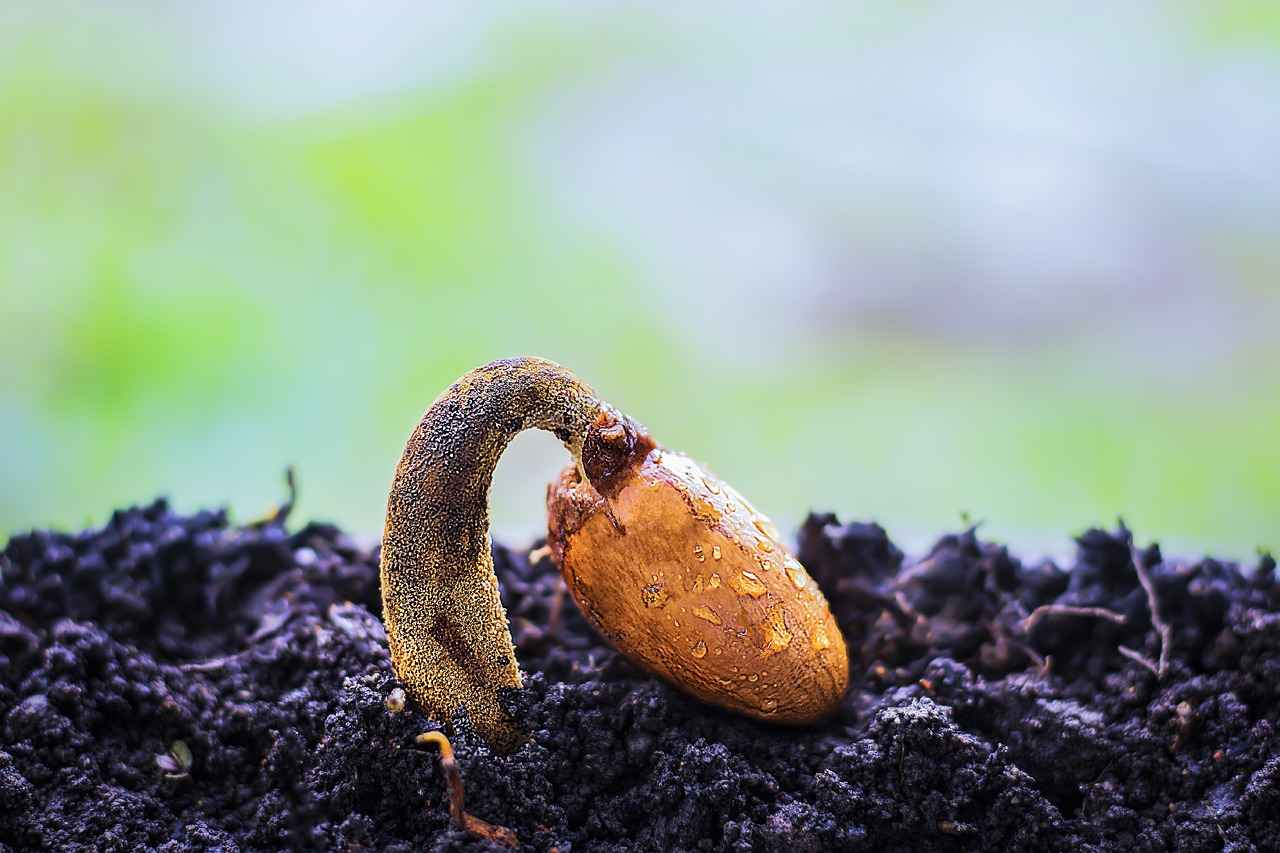
How Do Chia Seeds Interact with Medications?
Chia seeds, known for their numerous health benefits, can also pose risks when consumed alongside certain medications. Understanding these interactions is essential for anyone looking to incorporate chia seeds into their diet safely. This section delves into how chia seeds can interact with medications, particularly focusing on blood thinners and diabetes medications.
Chia seeds are rich in omega-3 fatty acids, fiber, and other beneficial nutrients. However, their nutritional profile can lead to interactions with specific medications. It is crucial to be aware of these interactions to avoid adverse effects.
Individuals taking anticoagulants or blood thinners, such as warfarin, should exercise caution when consuming chia seeds. The seeds can enhance the effects of these medications, potentially leading to an increased risk of bleeding. This is primarily due to the high omega-3 content in chia seeds, which can have a blood-thinning effect.
Additionally, for those managing diabetes, it is essential to monitor chia seed intake closely. Chia seeds can influence blood sugar levels due to their fiber content, which may lead to fluctuations in glucose levels. If you are on diabetes medications, consult your healthcare provider before adding these seeds to your diet.
Pregnant women should also be cautious with chia seeds. While they offer numerous health benefits, the high fiber content can lead to digestive issues such as bloating and gas, which may be uncomfortable during pregnancy. Consulting a healthcare provider can help ensure that chia seeds are consumed safely.
Incorporating chia seeds into your diet can be beneficial, provided you do so with care. Here are some practical tips:
- Start Small: Begin with a small serving of 1 teaspoon and gradually increase to 1-2 tablespoons as tolerated.
- Stay Hydrated: Drink plenty of water when consuming chia seeds to help manage their high fiber content.
- Consult Your Doctor: If you are on medication, especially anticoagulants or diabetes medications, discuss chia seed consumption with your healthcare provider.
The typical serving size for chia seeds is 1-2 tablespoons. Sticking to this guideline can help prevent potential adverse effects while still allowing you to enjoy the health benefits of these nutritious seeds. Remember that moderation is key.
Chia seeds can be easily incorporated into various recipes. They can be added to:
- Smoothies: Blend them into your favorite smoothies for added texture and nutrition.
- Oatmeal: Stir them into oatmeal or yogurt for a nutrient boost.
- Baked Goods: Use chia seeds in muffins or bread for added health benefits.
Exploring different recipes can make chia seed consumption enjoyable while minimizing risks associated with their intake.
What Medications Should You Be Cautious With?
Chia seeds are celebrated for their numerous health benefits, but it is crucial to recognize that they can interact with certain medications. If you are considering adding chia seeds to your diet, especially if you are on specific medications, it is essential to consult with your healthcare provider. This article will delve into the medications you should be cautious with when consuming chia seeds.
Chia seeds are rich in omega-3 fatty acids, fiber, and antioxidants, making them a popular addition to health-conscious diets. However, their impact on blood sugar levels and blood clotting factors means that they can pose risks when taken alongside certain medications.
It is particularly important for individuals taking anticoagulants (blood thinners) and diabetes medications to exercise caution when adding chia seeds to their diets. Here’s why:
- Anticoagulants: Medications such as warfarin, rivaroxaban, or aspirin are designed to prevent blood clots. Chia seeds contain a significant amount of omega-3 fatty acids, which can have a blood-thinning effect. This may enhance the effects of anticoagulants, increasing the risk of bleeding. It is vital to monitor your blood clotting levels and discuss any dietary changes with your doctor.
- Diabetes Medications: Chia seeds can influence blood sugar levels due to their high fiber content. While they may help stabilize blood sugar levels, they can also lead to hypoglycemia (low blood sugar) if consumed in large quantities alongside diabetes medications. If you are on insulin or other diabetes treatments, it’s essential to consult your healthcare provider before incorporating chia seeds into your diet.
Consulting your doctor is crucial because they can provide personalized advice based on your health history and current medications. They can help you determine the appropriate serving size of chia seeds and monitor any potential interactions. Your healthcare provider may suggest starting with a small amount and gradually increasing your intake while keeping an eye on your blood sugar and clotting levels.
Besides anticoagulants and diabetes medications, individuals on other medications should also consider the following:
- Blood Pressure Medications: Chia seeds may also have a mild effect on blood pressure, which could potentially interact with antihypertensive drugs.
- Digestive Medications: If you are taking medications for digestive issues, the high fiber content in chia seeds could exacerbate certain conditions, leading to discomfort.
If you receive the green light from your healthcare provider, here are some tips for safely incorporating chia seeds into your diet:
- Start with a small serving (1 teaspoon) and gradually increase to 1-2 tablespoons, monitoring your body’s response.
- Consider soaking chia seeds in water or other liquids before consumption to enhance digestibility.
- Maintain a balanced diet and ensure you are staying hydrated, especially when consuming high-fiber foods.
In summary, while chia seeds offer numerous health benefits, it is essential to approach their consumption with caution, particularly if you are on anticoagulants or diabetes medications. Always consult your healthcare provider to ensure that you can safely enjoy the advantages of these nutrient-dense seeds without compromising your health.
Are There Any Contraindications for Pregnant Women?
When it comes to nutrition during pregnancy, expectant mothers must be particularly cautious about their dietary choices. One such food that has garnered attention is chia seeds. While these tiny seeds are celebrated for their numerous health benefits, they also come with some potential risks, especially for pregnant women.
Chia seeds are often hailed as a superfood due to their rich nutrient profile. They are packed with fiber, omega-3 fatty acids, and antioxidants, making them a popular addition to smoothies, salads, and baked goods. However, the very properties that make chia seeds beneficial can also pose challenges for certain individuals, particularly those who are pregnant.
One of the primary concerns for pregnant women consuming chia seeds is their high fiber content. While fiber is essential for digestive health, excessive intake can lead to digestive discomfort. Symptoms may include bloating, gas, and constipation, which can be particularly uncomfortable during pregnancy.
During pregnancy, many women experience changes in their digestive system, making them more susceptible to gastrointestinal issues. Consuming too many chia seeds without proper hydration or gradual introduction can exacerbate these problems. Therefore, it is crucial for pregnant women to monitor their intake and adjust accordingly.
- Consult a Healthcare Provider: Before making any significant dietary changes, pregnant women should consult with their healthcare provider to ensure that chia seeds are safe for them.
- Start Slowly: If cleared by a healthcare professional, start with a small amount, such as one teaspoon, and gradually increase to avoid digestive issues.
- Stay Hydrated: Drinking plenty of water is essential when consuming high-fiber foods like chia seeds to help prevent constipation.
Pregnant women should be aware of the symptoms that may indicate digestive distress from chia seeds. Common signs include:
- Bloating
- Gas
- Constipation
If any of these symptoms occur, it may be necessary to reduce the intake of chia seeds or eliminate them from the diet.
If a healthcare provider approves the inclusion of chia seeds, there are several ways to consume them safely:
- Soaking: Soaking chia seeds in water or other liquids before consumption can help reduce their potential to cause digestive issues by making them easier to digest.
- Mixing with Other Foods: Incorporating chia seeds into smoothies, yogurt, or oatmeal can help balance their fiber content with other nutrients.
In addition to monitoring fiber intake, pregnant women should also be aware of potential allergic reactions. Although rare, some individuals may experience allergies to chia seeds, which can manifest as skin rashes or gastrointestinal discomfort. If any adverse reactions occur, it is crucial to seek medical advice.
In summary, while chia seeds can be a nutritious addition to a pregnant woman’s diet, caution is advised due to their high fiber content. Consulting with a healthcare provider and following recommended guidelines can help ensure a safe and healthy approach to consuming chia seeds during pregnancy.

How to Incorporate Chia Seeds Safely into Your Diet?
Incorporating chia seeds into your diet can be beneficial if done correctly. These tiny seeds are packed with nutrients, including fiber, protein, and omega-3 fatty acids, making them a popular addition to various meals. However, it’s essential to understand how to enjoy them safely to maximize their health benefits while minimizing potential risks. Here are some practical tips to help you incorporate chia seeds into your diet safely.
When introducing chia seeds into your diet, begin with small servings. A recommended starting point is 1 tablespoon per day. This allows your body to adjust to the increased fiber intake without overwhelming your digestive system.
After a week of consuming 1 tablespoon, you can gradually increase your intake to 2 tablespoons per day. This gradual approach helps to prevent digestive discomfort, such as bloating or gas, which can occur if you consume too much fiber too quickly.
Chia seeds can absorb up to 12 times their weight in water. Therefore, it is crucial to stay hydrated when consuming them. Ensure you drink plenty of water throughout the day, especially if you are eating chia seeds dry. Consider mixing them with liquids like smoothies, yogurt, or oatmeal to enhance hydration.
Soaking chia seeds in water or your favorite liquid for at least 30 minutes before consumption can make them easier to digest. This process allows the seeds to swell and form a gel-like consistency, which can be beneficial for your digestive system.
Chia seeds can be added to a variety of dishes, making them easy to include in your diet. Here are some ideas:
- Smoothies: Blend chia seeds into your morning smoothie for added nutrition.
- Overnight Oats: Mix chia seeds with oats and milk or yogurt and let them soak overnight for a delicious breakfast.
- Baked Goods: Add chia seeds to muffins, breads, or pancakes for a nutritious boost.
As you start incorporating chia seeds into your diet, pay attention to how your body reacts. If you experience any digestive issues, consider adjusting the quantity or frequency of consumption. Listening to your body is key to finding the right balance.
Although rare, some individuals may have allergic reactions to chia seeds. Symptoms can include itching, rashes, or gastrointestinal distress. If you notice any adverse reactions, discontinue use and consult a healthcare professional.
If you have underlying health conditions or are taking medications, it’s advisable to consult with a healthcare provider before adding chia seeds to your diet. This is particularly important for those on blood thinners or diabetes medications, as chia seeds can interact with these treatments.
By following these practical tips, you can safely enjoy the numerous health benefits of chia seeds while minimizing potential risks. Remember to introduce them gradually, stay hydrated, and listen to your body for a positive dietary experience.
What Are the Recommended Serving Sizes?
When it comes to incorporating chia seeds into your diet, understanding the recommended serving sizes is crucial for maximizing their benefits while minimizing potential side effects. Chia seeds are incredibly nutritious, but like any food, moderation is key.
A typical serving size of chia seeds is 1-2 tablespoons. This amount is generally considered safe and beneficial for most individuals. Sticking to this guideline can help prevent adverse effects such as digestive discomfort, which can occur if you consume too many seeds at once.
Understanding and adhering to the recommended serving sizes is essential for several reasons:
- Digestive Health: Chia seeds are high in fiber, with about 10 grams of fiber per ounce. Consuming them in large quantities can lead to bloating, gas, and constipation.
- Caloric Intake: While chia seeds are nutrient-dense, they are also calorie-dense. Overconsumption can lead to unwanted weight gain.
- Nutrient Absorption: Eating too many chia seeds may hinder the absorption of certain nutrients, as excessive fiber can interfere with digestion.
To ensure you are consuming the right amount, consider the following methods for measuring chia seeds:
- Use a Measuring Spoon: A standard tablespoon can help you accurately measure out 1-2 tablespoons of chia seeds.
- Weighing Scales: For more precision, especially if you are incorporating chia seeds into recipes, using a kitchen scale can help you measure the seeds accurately.
- Pre-Portioned Packs: Some brands offer pre-packaged servings of chia seeds, making it easy to consume the right amount.
Incorporating chia seeds into your meals can be enjoyable and simple. Here are a few suggestions:
- Chia Pudding: Combine 1-2 tablespoons of chia seeds with your choice of milk or a milk alternative, let it sit overnight, and enjoy a nutritious breakfast.
- Smoothies: Add chia seeds to your smoothies for a nutrient boost without altering the flavor significantly.
- Baked Goods: Incorporate chia seeds into muffins or breads to enhance their nutritional profile.
If you notice any digestive discomfort after consuming chia seeds, it may be a sign that you are exceeding the recommended serving size. Here are some steps to take:
- Reduce Intake: Scale back your consumption to the recommended 1-2 tablespoons.
- Stay Hydrated: Drink plenty of water to help your digestive system process the increased fiber.
- Consult a Healthcare Professional: If discomfort persists, it may be wise to seek advice from a doctor or nutritionist.
By adhering to the recommended serving sizes and incorporating chia seeds thoughtfully into your diet, you can enjoy their numerous health benefits while minimizing the risk of adverse effects. Always remember that moderation is key to a balanced diet.
Which Recipes Can Help You Enjoy Chia Seeds?
Chia seeds are a versatile and nutritious addition to your diet. Their unique texture and health benefits make them a popular choice for various recipes. In this section, we will explore exciting ways to incorporate chia seeds into your meals, ensuring that you can enjoy their benefits while minimizing any potential risks.
One of the simplest and most delicious ways to enjoy chia seeds is by adding them to smoothies. Their ability to absorb liquid allows them to blend seamlessly into your favorite drinks. Here are some tips:
- Start Small: Begin with 1 teaspoon of chia seeds in your smoothie to gauge your body’s response.
- Combine with Fruits: Blend chia seeds with fruits like bananas, berries, or mangoes to mask their nutty flavor.
- Add Liquid: Ensure you use sufficient liquid in your smoothie, as chia seeds can thicken the mixture.
Chia seeds can elevate your morning oatmeal, adding both texture and nutritional value. To incorporate them:
- Mix Before Cooking: Stir in 1 tablespoon of chia seeds into your oatmeal while it cooks to enhance its fiber content.
- Top It Off: Sprinkle chia seeds on top of your finished oatmeal along with fruits and nuts for added crunch.
- Soak Overnight: For a quick breakfast, mix chia seeds with oats and your choice of milk and let it sit overnight in the fridge.
Chia seeds are not just for smoothies and oatmeal; they can also be a fantastic addition to baked goods. Here’s how:
- Egg Substitute: Use chia seeds as a vegan egg replacement by mixing 1 tablespoon of chia seeds with 2.5 tablespoons of water and letting it sit until it forms a gel.
- Add to Muffins: Incorporate chia seeds into muffin batter for added nutrition without altering the flavor.
- In Cookies: Mix chia seeds into cookie dough for a healthy twist on your favorite recipes.
Chia pudding is a delightful and nutritious dessert that can be customized to your taste. Here’s a simple recipe:
Ingredients:- 1/4 cup chia seeds- 1 cup almond milk (or any milk of choice)- 1 tablespoon honey or maple syrup- Toppings: fruits, nuts, or granolaInstructions:1. In a bowl, mix chia seeds, almond milk, and sweetener.2. Stir well and refrigerate for at least 2 hours or overnight.3. Serve with your choice of toppings.
Chia seeds can also be used in savory dishes. Consider these ideas:
- Salads: Sprinkle chia seeds on salads for added crunch and nutrition.
- Soups: Stir chia seeds into soups as a thickening agent.
- Wraps: Add them to wraps or sandwiches for a nutrient boost.
By incorporating chia seeds into various recipes, you can enjoy their health benefits while keeping your meals exciting and diverse. Remember to start with small amounts and adjust according to your taste and tolerance. Experimenting with these seeds not only enhances your dishes but also contributes to a balanced diet.

What Are the Nutritional Considerations of Chia Seeds?
Chia seeds have gained immense popularity in recent years, primarily due to their impressive nutritional profile. Understanding the nutritional considerations of chia seeds is essential for making informed dietary choices. These tiny seeds are not only a source of essential nutrients but also offer numerous health benefits when consumed appropriately.
Chia seeds are packed with a variety of nutrients that contribute to their health benefits. Here are some key components:
- Omega-3 Fatty Acids: Chia seeds are one of the richest plant sources of omega-3 fatty acids, particularly alpha-linolenic acid (ALA), which is known for its heart health benefits.
- Fiber: A single ounce (28 grams) of chia seeds contains about 11 grams of fiber, which aids in digestion and promotes satiety.
- Protein: They offer a good amount of protein, making them an excellent addition to vegetarian and vegan diets.
- Antioxidants: Chia seeds are rich in antioxidants, which help combat oxidative stress and inflammation in the body.
- Minerals: They are an excellent source of essential minerals such as calcium, magnesium, and phosphorus, vital for bone health.
When compared to other seeds like flaxseeds and hemp seeds, chia seeds have a unique nutrient profile. For instance:
- Flaxseeds: While flaxseeds also contain omega-3 fatty acids, they must be ground to unlock their health benefits, whereas chia seeds can be consumed whole.
- Hemp Seeds: Hemp seeds are higher in protein but lower in fiber compared to chia seeds, making chia a better option for those looking to increase their fiber intake.
Incorporating chia seeds into your diet can lead to several health benefits:
- Improved Digestive Health: The high fiber content in chia seeds promotes regular bowel movements and helps prevent constipation.
- Heart Health: Omega-3 fatty acids contribute to reduced inflammation and lower blood pressure, promoting overall heart health.
- Weight Management: The gel-like consistency of chia seeds when soaked in liquid can help you feel fuller for longer, aiding in weight management.
- Bone Health: The calcium and other minerals in chia seeds support bone density and overall skeletal health.
To maximize the nutritional benefits of chia seeds, consider the following tips:
- Start Small: Begin with a small serving size of 1 tablespoon and gradually increase your intake to avoid digestive discomfort.
- Soak Before Eating: Soaking chia seeds in water or other liquids for at least 30 minutes can enhance their digestibility and nutrient absorption.
- Add to Meals: Incorporate chia seeds into smoothies, yogurt, oatmeal, or baked goods for an easy nutrient boost.
In summary, chia seeds are a powerhouse of nutrients that can significantly enhance your diet. By understanding their nutritional profile and health benefits, you can make informed decisions about how to incorporate them into your meals for optimal health.
How Do Chia Seeds Compare to Other Seeds?
When exploring the world of superfoods, chia seeds stand out due to their unique nutrient profile. However, they are often compared to other popular seeds, such as flaxseeds and hemp seeds. Understanding these differences can significantly impact your dietary choices and overall health.
Chia seeds are a powerhouse of nutrients. They are particularly rich in:
- Omega-3 fatty acids: Essential for heart health and brain function.
- Fiber: Aids digestion and promotes satiety.
- Antioxidants: Help combat oxidative stress in the body.
- Protein: Provides a plant-based source of protein.
This unique combination of nutrients makes chia seeds an excellent addition to various diets.
While both chia and flaxseeds are rich in omega-3 fatty acids, there are notable differences:
- Omega-3 Content: Chia seeds contain ALA (alpha-linolenic acid), while flaxseeds are higher in this essential fatty acid.
- Fiber Type: Chia seeds have a higher soluble fiber content, which can help with hydration and digestion.
- Digestibility: Chia seeds can be consumed whole, while flaxseeds need to be ground to maximize nutrient absorption.
Hemp seeds also offer a unique nutrient profile:
- Protein Quality: Hemp seeds contain all nine essential amino acids, making them a complete protein source.
- Gamma-Linolenic Acid (GLA): Hemp seeds are rich in GLA, which has anti-inflammatory properties.
- Minerals: They are a good source of magnesium, iron, and zinc, contributing to overall health.
While chia seeds are higher in fiber, hemp seeds provide a more balanced protein profile.
The choice between chia, flax, and hemp seeds ultimately depends on your individual health goals:
- If you seek a high-fiber option, chia seeds are ideal.
- For a complete protein source, hemp seeds are recommended.
- If you are focused on omega-3 intake, consider flaxseeds.
Incorporating these seeds into your meals can be simple and enjoyable:
- Add chia seeds to smoothies or yogurt for a nutrient boost.
- Use flaxseed meal in baking to enhance fiber content.
- Sprinkle hemp seeds on salads for added crunch and nutrition.
Experimenting with different seeds can help you find the right balance for your dietary needs.
In summary, understanding the differences between chia seeds, flaxseeds, and hemp seeds can empower you to make informed dietary choices. Each seed offers unique benefits, making them valuable additions to a balanced diet.
What Are the Long-Term Effects of Regular Consumption?
Regular consumption of chia seeds can significantly enhance your overall health, particularly when consumed in moderation. These tiny seeds, which originate from the Salvia hispanica plant, are a powerhouse of nutrients. They are rich in fiber, omega-3 fatty acids, and various essential vitamins and minerals. Understanding the long-term benefits of chia seeds can help you incorporate them into your diet effectively.
One of the most notable long-term benefits of chia seeds is their potential to improve heart health. The high content of omega-3 fatty acids, particularly alpha-linolenic acid (ALA), plays a crucial role in reducing inflammation and lowering blood pressure. Studies suggest that regular intake of chia seeds can lead to a decrease in bad cholesterol levels while increasing good cholesterol, ultimately promoting a healthier cardiovascular system.
Chia seeds are an excellent source of dietary fiber, which is vital for maintaining digestive health. When consumed regularly, the fiber in chia seeds can help regulate bowel movements and prevent constipation. This fiber also acts as a prebiotic, supporting the growth of beneficial gut bacteria. As a result, long-term consumption can contribute to improved gut health and overall digestive function.
Incorporating chia seeds into your diet may also assist with weight management. The soluble fiber in chia seeds absorbs water and expands in the stomach, promoting a feeling of fullness. This can help reduce overall calorie intake, making it easier to maintain a healthy weight over time. Additionally, the protein content in chia seeds can help curb cravings and support muscle maintenance.
Chia seeds are rich in several nutrients that are essential for bone health, including calcium, phosphorus, and magnesium. Regular consumption can contribute to maintaining strong bones and may reduce the risk of osteoporosis as you age. The presence of these minerals makes chia seeds a valuable addition to the diets of individuals looking to enhance their bone density.
While the benefits of chia seeds are numerous, it is crucial to consume them in moderation. Overconsumption can lead to digestive issues, including bloating and gas, due to their high fiber content. It is recommended to start with small amounts, gradually increasing your intake to allow your body to adjust. Staying well-hydrated is also essential when consuming high-fiber foods like chia seeds.
To reap the long-term benefits of chia seeds, consider adding them to your daily meals. Here are some practical ways to include them:
- Add chia seeds to your morning smoothie for an extra nutrient boost.
- Mix them into oatmeal or yogurt for added texture and fiber.
- Use chia seeds as a thickening agent in soups and sauces.
- Incorporate them into baked goods, such as muffins and bread.
In conclusion, the long-term effects of regular chia seed consumption can lead to numerous health benefits, particularly for heart health and digestive function. By understanding how to incorporate them safely into your diet, you can enjoy these benefits while minimizing potential risks.
Frequently Asked Questions
- What are chia seeds?
Chia seeds are tiny, nutrient-packed seeds that come from the Salvia hispanica plant. They are known for being rich in fiber, omega-3 fatty acids, and antioxidants, making them a popular choice for health-conscious individuals.
- Can chia seeds cause digestive issues?
Yes, while chia seeds are beneficial, overconsumption can lead to digestive problems like bloating and gas. It’s best to start with small amounts and increase gradually to avoid discomfort.
- How should I prepare chia seeds?
Soaking chia seeds in water or other liquids before consuming can help improve digestion. This allows them to expand and become easier on your stomach, reducing the risk of digestive issues.
- Are there any allergies associated with chia seeds?
Though rare, some people may have allergic reactions to chia seeds. Symptoms can include itching or swelling. If you suspect an allergy, consult a healthcare professional.
- What medications should I be cautious with when consuming chia seeds?
If you are on blood thinners or diabetes medications, it’s important to talk to your doctor before adding chia seeds to your diet, as they can affect blood sugar and clotting factors.
- What is the recommended serving size for chia seeds?
A typical serving size is about 1-2 tablespoons. Sticking to this guideline can help you enjoy their benefits while minimizing potential side effects.
